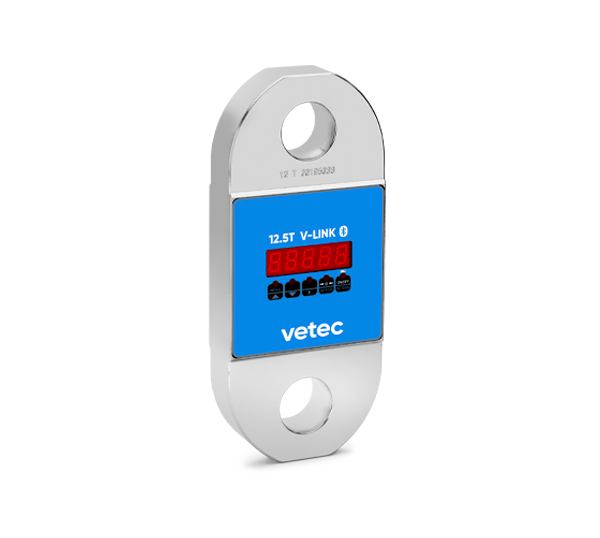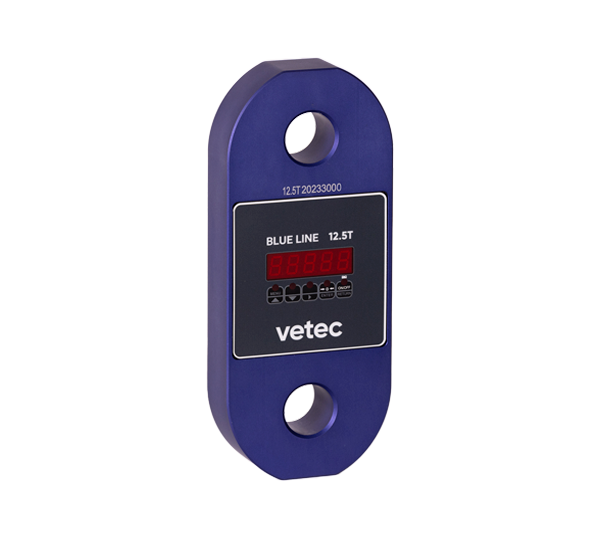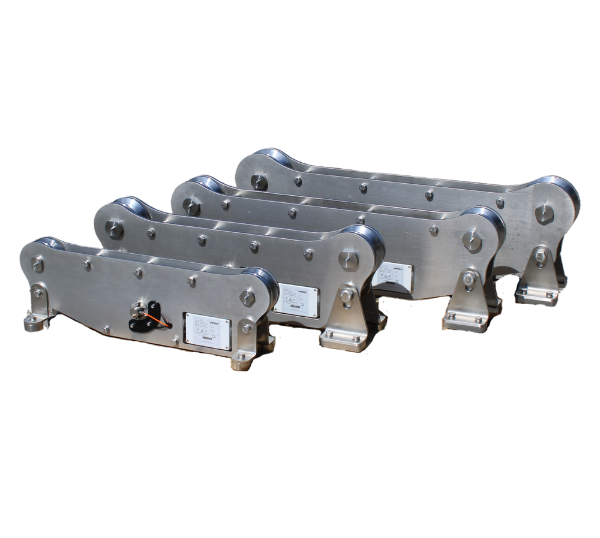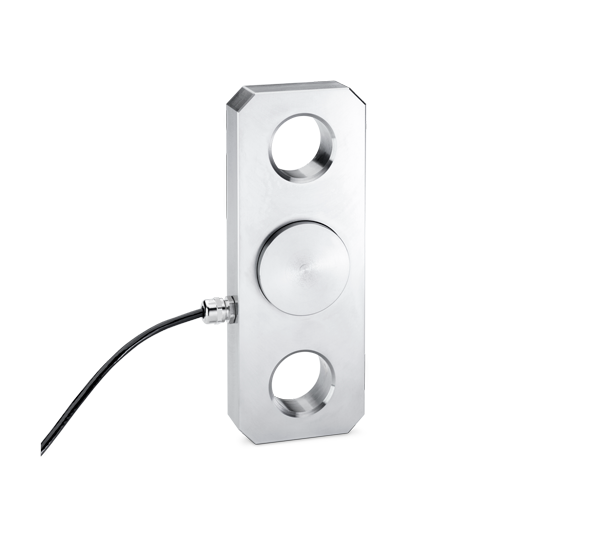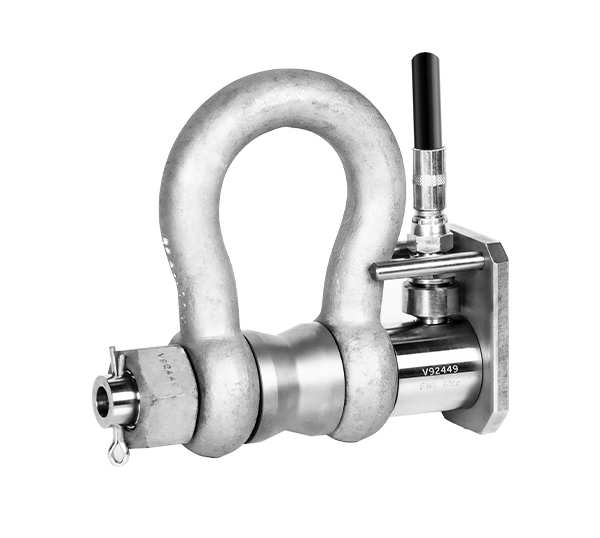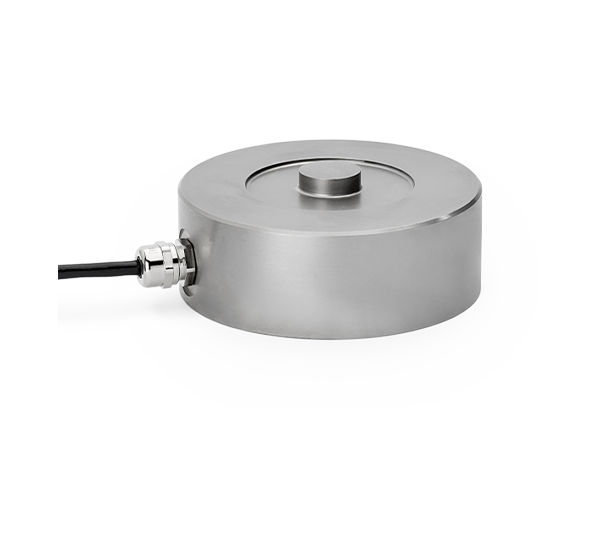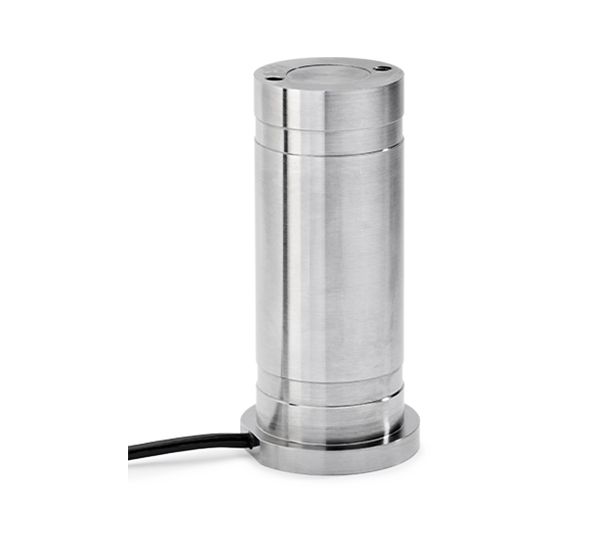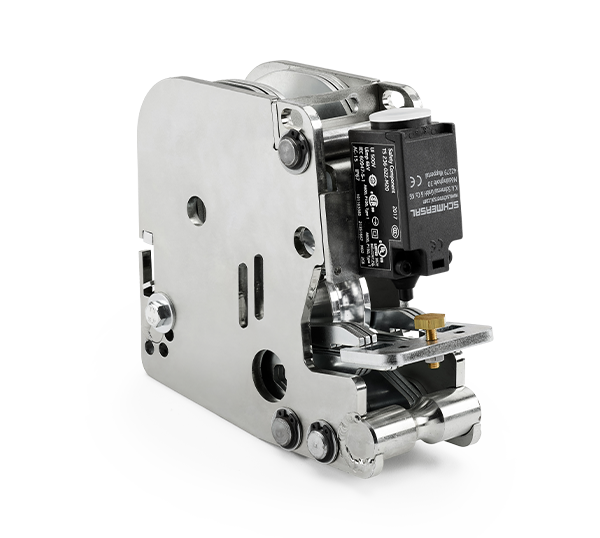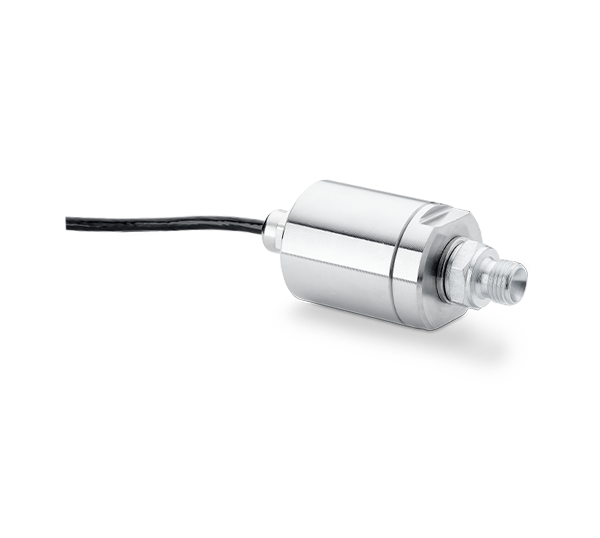Vejeceller
Alle vejeceller fra Vetec er designet til præcision, lethed og anvendelse af høj holdbarhed. Vores udvalg dækker alle typer af produkter inden for lastovervågning og vejeløsninger, som giver værdi gennem innovativ tænkning. Vores produkter hjælper ofte kunder med at forbedre deres omkostningseffektivitet, sikkerhed og forskellige former for arbejdsprocesser.

Bolt-on strain gauge sensorer
Andre vejeceller
Spænding eller kompression?
Hvis du ikke ved, hvad du har brug for, kan du måske lære noget her - ellers tøv ikke med at kontakte os.
Hvad er en spændingsvejecelle?
En spændingsvejecelle er en type vejecelle, der bruges til at måle spænding eller trækkraft. Den fungerer ved at omdanne en trækkraft til et elektrisk signal, der kan læses og behandles af elektronisk udstyr. Spændingsvejeceller er typisk cylindriske i form, med et centralt hul, gennem hvilket et belastningsbærende kabel eller en stav/stang kan trækkes igennem. Vejecellen består af en strain guage, som er en lille enhed, der ændrer modstanden, når den udsættes for en mekanisk belastning. Strain guagen er fastgjort til vejecellen, og når kablet eller stangen spændes eller bøjes, registrerer strain guagen mængden af belastningen og sender et elektrisk signal til en måleinstrument, såsom en digitalt display eller en datalogger, som kan bruges til at beregne spændingen i et kabel eller på en stav.
Spændingsvejeceller anvendes bredt i mange brancher og på mange områder, som f.eks. på testudstyr, i materialehåndtering og i fremstillingsprocesser. De anvendes ofte også i hejse- og løfteoperationer, hvor det er afgørende at måle vægten af et objekt præcist for at sikre, at udstyret ikke overbelastes.
Spændingsvejeceller er normalt lavet af robuste materialer som legeringsstål og er designet til at være meget nøjagtige og modstå forskellige miljøforhold. På grund af brugen er de også designet til at være yderst holdbare og i stand til at modstå skader fra stød, vibrationer og andre former for mekanisk belastning.
For at opsummere er en spændingsvejecelle en enhed, der kan bruges til at måle spænding eller trækkraft ved at omdanne det til et elektrisk signal og outputtet blive målt af elektronisk udstyr. Den anvendes bredt i forskellige brancher og er afgørende i mange anvendelser som materialehåndtering og løfteoperationer.
Hvad er en kompressionsvejecelle?
En kompressionsvejecelle er en type vejecelle, der bruges til at måle trykkraft eller den kraft, der udøves på et objekt, når det bliver presset eller komprimeret. Ligesom spændingsvejeceller konverterer kompressionsvejecellen en mekanisk kraft til et elektrisk signal, der kan læses og behandles af elektronisk udstyr.
Kompressionsvejecellen har typisk en cylindrisk eller rektangulær form og har et hul øverst, hvor en belastning kan påføres. Vejecellen er normalt lavet af et materiale som legeringsstål og indeholder en strain gauge, der ændrer den elektriske modstand som reaktion på en trykkraft. Når belastningen påføres, genererer strain guagen et elektrisk signal, der sendes til et måleinstrument, såsom et digitalt display eller en datalogger, som kan bruges til at beregne den kompressive kraft på vejecellen.
Kompressionsvejeceller anvendes ofte i applikationer, der kræver præcis vægtmåling, såsom vejebroer, testudstyr og fremstillingsprocesser, hvor det er afgørende at kontrollere materialets kompressive styrke. De bruges også til at måle kraften, der udøves i industrielle og kommercielle applikationer, såsom den kraft, der kræves for at presse og forme materialer.
Ligesom spændingsvejeceller er kompressionsvejeceller designet til at være meget holdbare og modstå skader fra stød, vibrationer og andre former for mekanisk belastning. Materialerne og designet er normalt robuste og i stand til at modstå forskellige miljøforhold.
For at opsummere er en kompressionsvejecelle en enhed, der måler kompressiv kraft og konverterer det til et elektrisk signal, der bliver læst af elektronisk udstyr. Den har typisk en cylindrisk eller rektangulær form og et hul øverst til påføring af belastning og anvendes bredt på tværs af brancher.
Hvad er en bolt-on vejecelle?
En bolt-on-vejescelle er designet til at blive monteret mellem to konstruktionselementer for at måle den kraft, der påføres mellem dem. Den består typisk af en metalblok med et gevindhul i midten, der gør det muligt, at bolte den til det ene konstruktionselement, og en gevindstang, der stikker ud fra den modsatte side og fastgøres til det andet konstruktionselement.
Når der påføres en kraft på de to konstruktionselementer, sker det, at den påboltede vejecelle let deformeres.
Denne deformation ændrer den elektriske modstand af en strain gauge, der er fastgjort til vejecellen, hvilket kan måles og bruges til at beregne den påførte kraft.
Bolt-on-vejeceller anvendes ofte i industrielle applikationer, hvor det er nødvendigt at overvåge maskiner, udstyr og applikationer. De foretrækkes ofte frem for andre typer vejeceller, fordi de er lette at installere, kan udskiftes nemt og kræver ikke nogen ændringer af den eksisterende maskine eller applikation.
IP klasse
Høj IP klassifikation - Ideel i våde og støvede omgivelser
Materiale
Høj kvalitets rustfast stål. Certificeret Toolox 33 eller Impax Supreme steel.
Præcision
Alle vejeceller er højeste kvalitet med anerkendt vejningspræcision.
Servicecenter
In-house servicecenter med hurtig support, reparationer og service.
Hvordan vælger du vejeudstyr?
Der er flere faktorer at overveje, når du vælger vejeudstyr.
Kapacitet
Vejeudstyret skal kunne håndtere den maksimale belastning, som det påføres. Det er vigtigt at vælge vejeudstyr med en kapacitet, der overstiger den maksimale belastning med mindst en faktor på 2-3 gange.
Nøjagtighed
Nøjagtigheden af vejeudstyret vil påvirke præcisionen af målingerne. Vælg vejeudstyr med den højeste nøjagtighed, der er inden for dit budget.
Udgangssignal
Udgangssignalet fra vejeudstyret vil afhænge af den type målesystem, du bruger. Sørg for, at vejeudstyrets udgangssignal er kompatibelt med dit målesystem.
Temperaturfølsomhed
Noget vejeudstyr er følsomt over for temperaturændringer, hvilket kan påvirke deres nøjagtighed. Hvis vejeudstyret skal bruges på et sted med betydelige temperaturudsving, bør du overveje at vælge vejeudstyr med lav temperaturfølsomhed.
Miljøforhold
Vejeudstyret skal kunne modstå de miljøforhold, det vil blive brugt i. For eksempel, hvis det skal bruges udendørs, skal det kunne modstå ekstreme temperaturer, fugtighed og andre vejrforhold.
Størrelse og form
Størrelsen og formen på vejeudstyret skal passe til applikationen. Overvej pladsbegrænsninger og formen på det objekt, der skal måles.
Pris
Prisen på vejeudstyret bør overvejes, men det bør ikke være den eneste faktor. Vejeudstyr af høj kvalitet kan koste mere, men det kan også give mere præcise og pålidelige målinger.
Ved at overveje disse faktorer kan du vælge vejeudstyr, der er velegnet til dit budget og anvendelsesområde.

